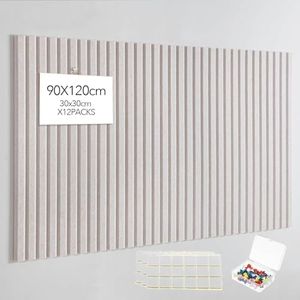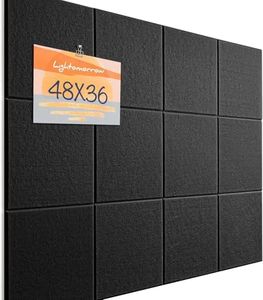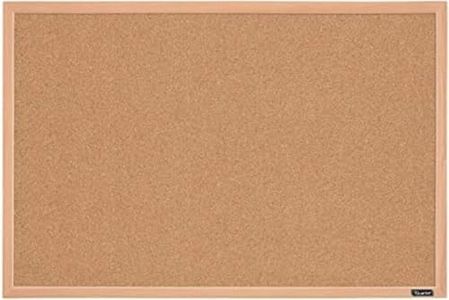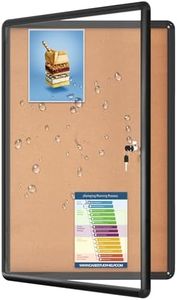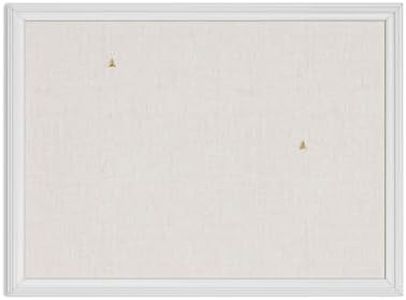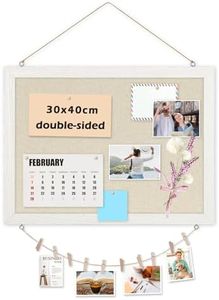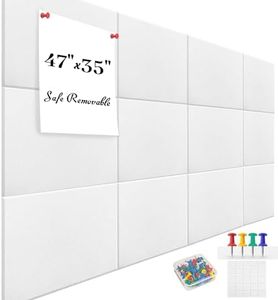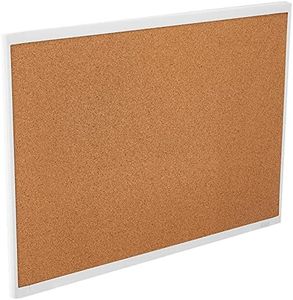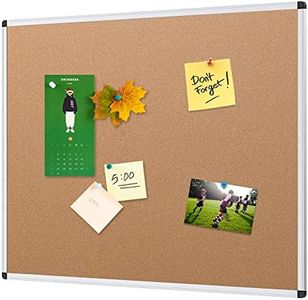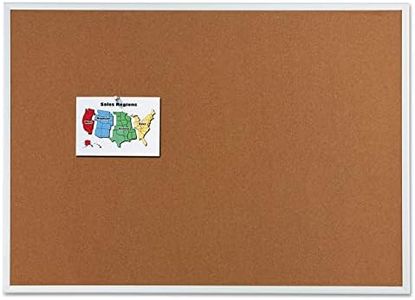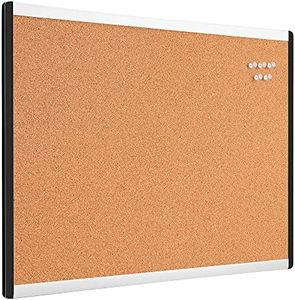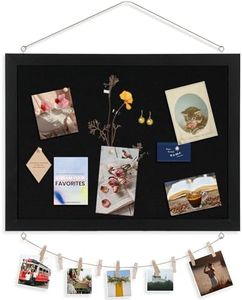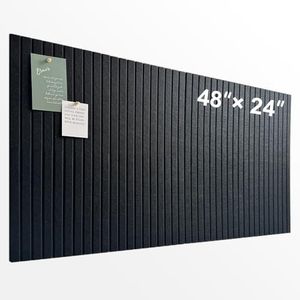We Use CookiesWe use cookies to enhance the security, performance,
functionality and for analytical and promotional activities. By continuing to browse this site you
are agreeing to our privacy policy
10 Best Cork Boards
From leading brands and best sellers available on the web.Buying Guide for the Best Cork Boards
Choosing the right cork board is all about understanding how and where you'll use it, so you can match your needs to the board's size, frame, thickness, and additional features. Cork boards come in various shapes and qualities, from those perfect for a small study corner to models designed for busy office spaces. Take a moment to think about how much space you have to hang the board and what you plan to pin or display. This will help you focus on the key aspects, making your shopping easy and effective.Board SizeBoard size refers to the dimensions of the cork board, usually given in inches or centimeters. This is important because it determines how much content you can display and the space it will take up on your wall. Smaller boards (up to about 18x24 inches) are great for single desks or small rooms if you only need to post a few notes or pictures. Medium sizes (about 24x36 inches) suit shared spaces or moderate use, such as family kitchens or dorm rooms. Large boards (36x48 inches and above) are best for offices, classrooms, or places where you need to post many items at once. Before you pick a size, consider the wall space you have available and how much you'll want to display at one time.
Cork ThicknessCork thickness is how deep the cork layer is on the board. This matters because thicker cork boards hold pins better and last longer, as pins won’t go all the way through to the back right away. Thin cork (under 1/4 inch) is okay for light, occasional use and fewer pins, but it may wear out quickly. Standard thickness (around 3/8 inch) is suitable for regular home or office use, while extra-thick boards (half inch or more) are meant for heavy use and can handle lots of pinning and re-pinning. If you plan to use the board daily or have lots to post, prioritize thicker cork for durability and effectiveness.
Frame MaterialThe frame material surrounds and protects the edges of the cork board. It's important because it affects both the board's look and its durability. Wooden frames offer a classic, warm appearance and can blend nicely with home furnishings, but might be heavier. Aluminum or metal frames are typically lighter and give a modern, durable feel, often good for offices or high-traffic areas. Frameless boards are an option if space-saving or a minimalist style is your priority, but they may be more prone to damage on the corners. Think about the room’s style and how much wear and tear the board might see when selecting a frame material.
Mounting OptionsMounting options describe how the cork board can be attached to a wall. Some boards use simple hooks or wires, while others come with pre-drilled holes, adhesive strips, or more permanent hardware. This spec matters so you can ensure safe and easy installation, especially if you're renting or want to avoid wall damage. Lightweight boards can use adhesive strips or push pins, but larger or heavier boards usually need screws and anchors for support. Choose a mounting system that matches your wall type and installation skills—if you want flexibility to move the board, temporary mounts are handy; for a long-term fixture, pick something more secure.
Surface QualitySurface quality refers to the smoothness and consistency of the cork itself. Higher quality cork is denser, smoother, and self-healing, meaning it closes up after pins are removed, keeping the board looking tidy. Low-quality cork may crumble, show pin holes quickly, and lose its grip. If you care about the appearance or plan to use the board often and for a long time, look for boards described as using 'premium' or 'self-healing' cork. For quick, short-term, or decorative use, this might be a less important concern.
Additional FeaturesSome cork boards come with extra features, such as integrated calendars, whiteboard sections, or included accessories like push pins and markers. These additions can add versatility, making the board useful for planning, reminders, or group activities. If all you need is a basic spot to pin notes or photos, you may not need these extras. But if you're looking to organize tasks, schedules, or share with a group, a board with these bonus features can be helpful. Consider how you plan to use the board and whether these features match your needs.
